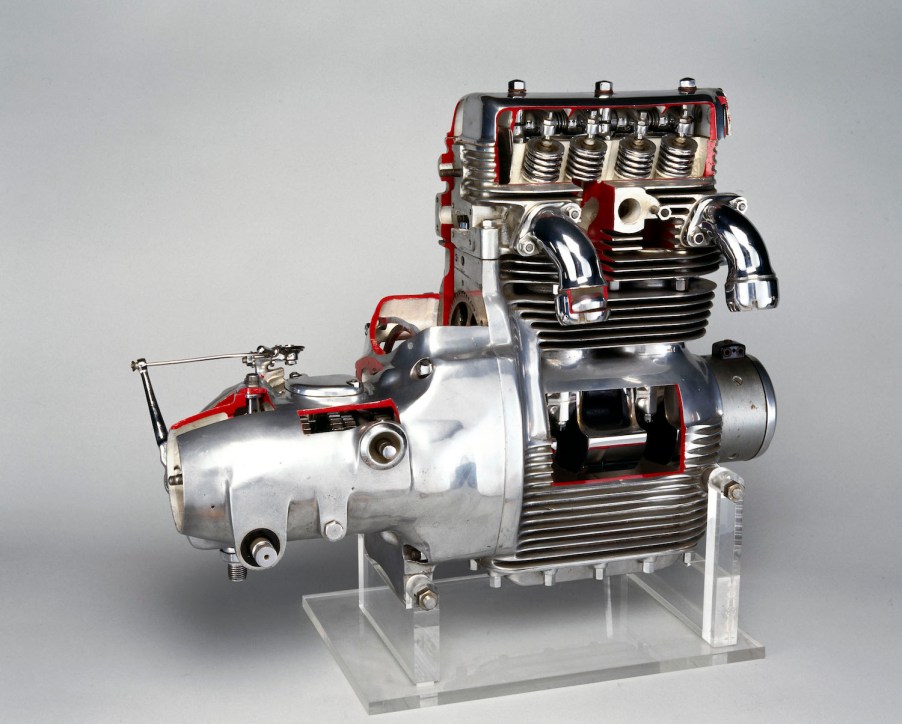
What Does DOHC Stand For?
Knowing what kind of engine you have is important for car maintenance, so we are going to breakdown some engine-defining terms. DOHC is a common acronym in engine advertising. It stands for Double Overhead Camshaft. It means the engine in question has separate camshafts to operate its intake valves and its exhaust valves. This layout leads to a more complex–and thus expensive–engine. But it also boosts the engine’s performance.
What is a camshaft?
A camshaft is a shaft that rotates at the same speed as the engine. It is punctuated in a series of “cams” or lobes designed to actuate each cylinder’s intake and exhaust valves–at the precise moment that they must open and close.

An internal combustion engine requires capturing all the combining gases from an explosion inside a sealed container–the cylinder. These expanding gases drive the piston (which also acts as the cylinder’s floor), which rotates the engine’s crankshaft.
Between combustion cycles, this cylinder must open up enough to let the spent exhaust gas escape and fresh fuel/oxygen mixture in. The engine accomplishes this with intake and exhaust valves at the top of the cylinder–according to How Stuff Works.
A timing chain, belt, or gear attached to the crankshaft spins a camshaft at the top of the engine. The purpose of this shaft is to lift a rocker arm that extends to either an exhaust or intake valve and then presses it open when it’s that valve’s turn.
What is a DOHC?
DOHC stands for double-overhead camshaft. It is a performance upgrade to a single overhead camshaft (SOHC) engine that allows the engine to spin faster. This is because the cam lobes of a DOHC can operate the corresponding exhaust or intake valves directly instead of relying on an unwieldy rocker arm.

The Achilles heel of a SOHC engine is the series of rocker arms that extend from the single camshaft out to either the exhaust side or intake side of the cylinder bank. These rocker arms are like miniature see-saws. When the corresponding lobe of the camshaft lifts one end, the other end presses its valve open.
But cam lobes create friction every time they spin past a rocker arm. This limits the top speed of a SOHC engine. Automakers pioneered the DOHC for early race car engines with the goal of higher-revving and more efficient powerplants. Nowadays, DOHC engines are common in passenger cars, but they still offer the same benefit.
You can see a visual representation of a DOHC vs. a SOHC engine in the video below:
How many camshafts does a double overhead camshaft (DOHC) engine have
Even though a DOHC engine has “double” in its name, it does not always have just two camshafts. A DOHC engine has an intake camshaft and an exhaust camshaft for every bank of cylinders. So a V-shaped engine (V6, V8) with a DOHC will have four camshafts total. An inline version will have just two.
Just as confusing are single overhead camshaft (SOHC) engines with two cams. An SOHC engine has one camshaft for each bank of cylinders. Therefore, a V-shaped SOHC engine has two camshafts.
One example of a V-shaped SOHC is the Harley-Davidson V-twin motorcycle engine. Harley has even advertised this SOHC engine as a “twin-cam” in the past.
Next, read about the flat plane crankshaft that gives Ferraris and Corvette’s supercar power or learn the benefits and downsides of both a DOHC and SOHC engine in the video below:



